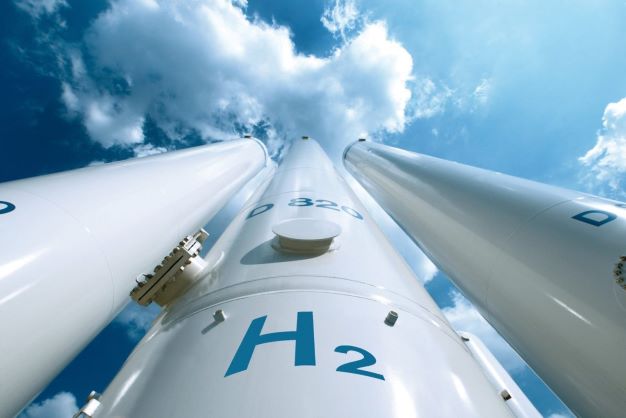From pv magazine Global
Researchers at the National University of Singapore have developed an optimisation model for PV-powered green hydrogen facilities that can evaluate different options for each technology.
The scientists said in “Green hydrogen from solar power for decarbonisation: What will it cost?,” which was recently published in Energy Conversion Management, that their model incorporates solar irradiance, physical hydrogen storage, land footprint, power grid carbon intensity, and various factors including project type, size, capital and operating costs, efficiencies, and lifespans. They also said that in the current technology landscape, an LCOH of less than USD 10/kg ($15/kg) will be needed to make green hydrogen compete with grey, blue, and orange hydrogen.
“The model accounts for the impact of intra-day and inter-day variations in renewable electricity generation by considering the solar irradiance data at a fine granularity,” they said, noting that it also allows for an import from and export to the local electrical grid. “The model enables an option to install batteries for storing and utilising renewable electrons. Similarly, it also considers the storage of hydrogen molecules to manage hydrogen demand.”
The model considers a green hydrogen facility with a PV plant, electrolyser, battery storage, buffer tanks, and a pumping station for hydrogen supply, and incorporates the facility’s ability to trade power with the grid as necessary.
“The main challenge in designing this facility is to use the transient and uncertain solar irradiance optimally to satisfy hydrogen demand at the least expense,” the scientists emphasised. “The model is employed to obtain the optimal facility design that yields cheapest green hydrogen under different geographical and techno-economic conditions.”
The model works based on four different scenarios: a fully grid-disconnected plant or Islanded Facility (ILF) which generates exclusively green hydrogen; a plant that can buy electricity from the grid with no option for selling it back or Facility with Grid Import (FGI); a facility that can sell electricity to the grid with no option of buying it or Facility with Grid Export (FGE); and a plant that can either import electricity from or export electricity to the local power grid or Facility with Grid Import and Export (FGIE).
For the first plant, the research team found that its LCOH might be USD 10.68/kg in Saudi Arabia, USD 12.0/kg in Australia, USD 13.86/kg in Singapore, and USD 42.12/kg in Germany, with the difference between these three countries being attributable mainly to the solar radiation levels and the costs being estimated by assuming the cost of water to be zero. “The stronger the solar irradiance, the lower the LCOH and smaller the solar PV farm,” the academics said.
For Singapore only, the researchers also identified the LCOH of the other project typologies and found it is USD 11.78/kg, USD 12.55/kg, and USD 10.44/kg for the FGI, FGE, and FGIE projects, respectively.
“Clearly, grid connectivity in any configuration lowers LCOH compared to ILF,” they explained. ” Clearly, grid connectivity in any configuration lowers LCOH compared to ILF the he focus should be on advances in solar PV, storage, and battery technologies.”
According to their analysis, an LCOH of USD 3.29/kg to 4.15/kg could be through a 60% reduction in solar PV Capex, a 20% increase in electrolyser performance, a 75% reduction in battery Capex, and a discount factor of 0.01%. “Indeed, green hydrogen seems like a potential yet costly silver bullet for deep decarbonisation at this time,” they concluded.
This content is protected by copyright and may not be reused. If you want to cooperate with us and would like to reuse some of our content, please contact: editors@pv-magazine.com.









By submitting this form you agree to pv magazine using your data for the purposes of publishing your comment.
Your personal data will only be disclosed or otherwise transmitted to third parties for the purposes of spam filtering or if this is necessary for technical maintenance of the website. Any other transfer to third parties will not take place unless this is justified on the basis of applicable data protection regulations or if pv magazine is legally obliged to do so.
You may revoke this consent at any time with effect for the future, in which case your personal data will be deleted immediately. Otherwise, your data will be deleted if pv magazine has processed your request or the purpose of data storage is fulfilled.
Further information on data privacy can be found in our Data Protection Policy.